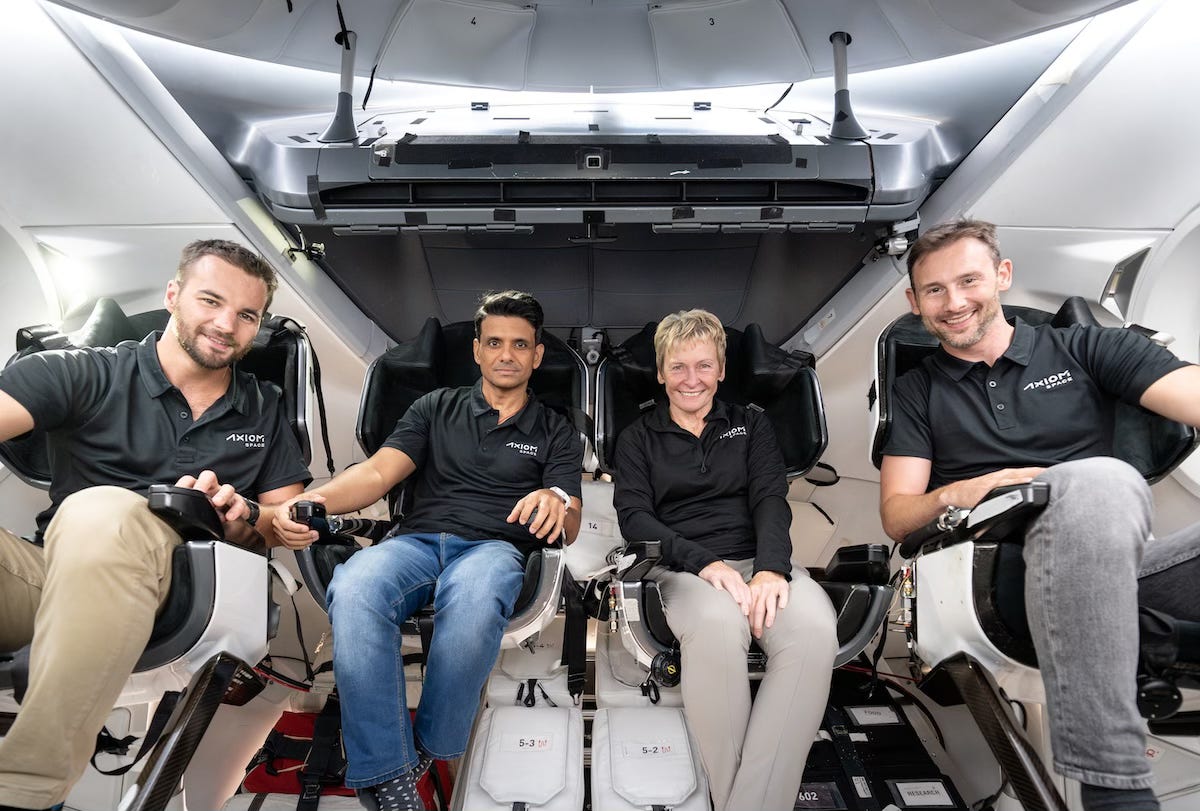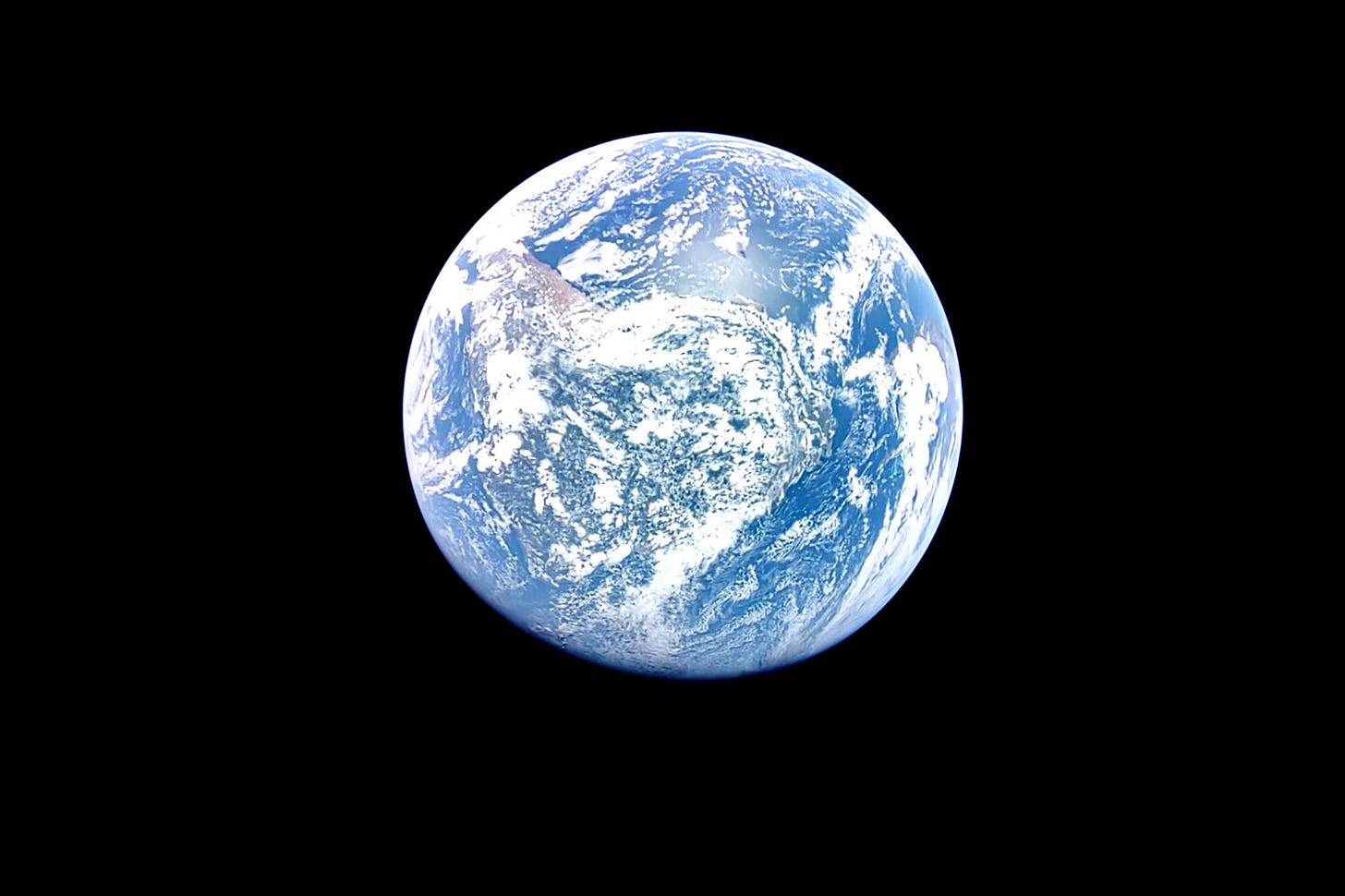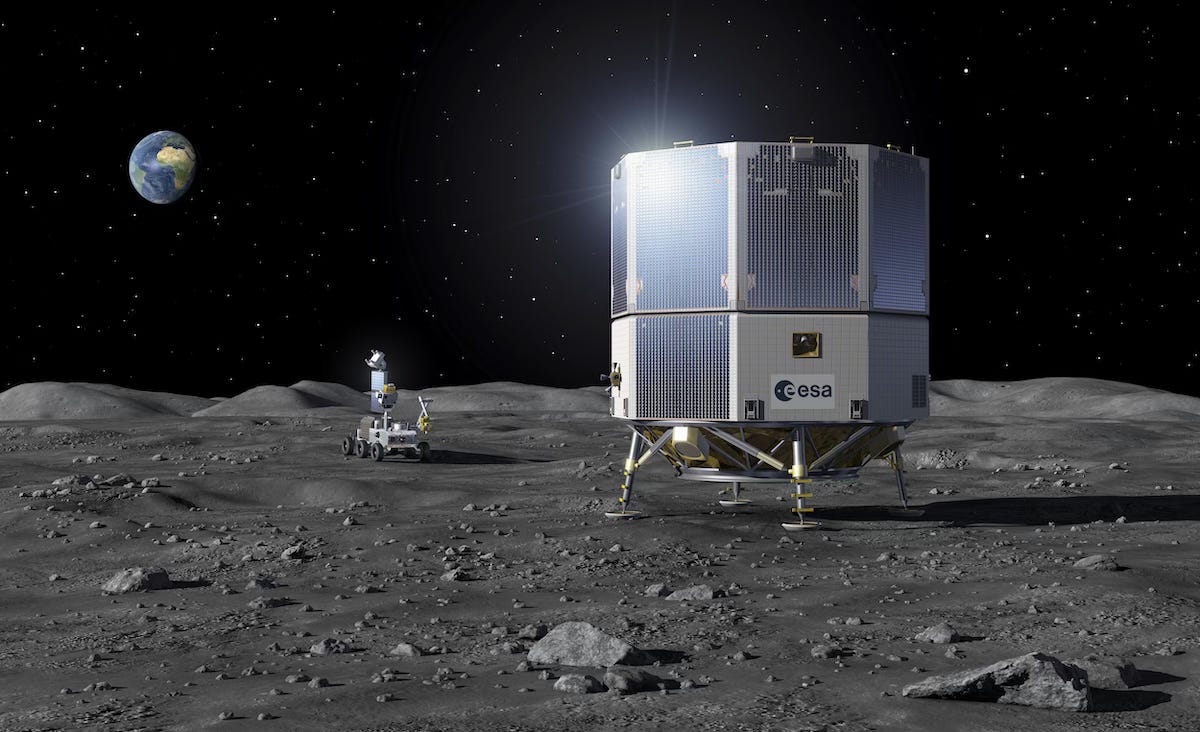Gardeners of the Galaxy Mission Report: 4 February 2025
Your weekly round-up of astrobotany news and adventure. This week we've got plant experiments flying on Axiom-4, Arabidopsis growing on the ISS and the past, present & future of Wisconsin Fast Plants!
Hello, Gardeners of the Galaxy! Welcome to this week's Mission Report.

NASA has officially announced the Axiom Mission 4 (Ax-4) crew that will launch to the International Space Station (ISS) no earlier than Spring 2025. Ax-4 will be Axiom Space’s fourth private astronaut mission to the ISS, and former NASA astronaut Peggy Whitson will be its commander. ISRO (Indian Space Research Organization) astronaut Shubhanshu Shukla will serve as pilot, and the two mission specialists are European Space Agency (ESA) project astronaut Sławosz Uznański-Wiśniewski of Poland and Tibor Kapu of Hungary.
ISRO and ESA recently entered into an agreement to cooperate on activities related to Astronaut Training, Mission Implementation and Research Experiments. This agreement provides an opportunity for undertaking joint microgravity experiments, and two have been shortlisted for the Ax-4 mission.
The International Centre for Genetic Engineering & Biotechnology (ICGEB) is working on an experiment on “Comparative growth and proteomics responses of cyanobacteria on urea and nitrate in microgravity”, and the Indian Institute of Space Science and Technology is partnering with Kerala Agricultural University for “Impact of Microgravity on Growth and Yield Parameters in Food Crop Seeds”.

On the ISS, Don Pettit has been working on astrobotany experiments, watering the Arabidopsis plants growing for Plant UV-B, an experiment to understand the effects of microgravity and ultraviolet radiation on plant life. And he removed research components from inside the Advanced Plant Habitat now that Plant Habitat-07 is complete. The harvested red lettuce was preserved and will soon be tested for its nutritional value.
Two great articles from Wisconsin Fast Plants that I missed at the end of last year. ‘Fast Plants in Space: Past, Present, and Future’ recaps the key discoveries that have been made with Fast Plants and then looks at the current astrobotany experiments using Fast Plants and the upcoming trip they’ll take to the Moon with LEAF β. ‘Emily Calandrelli Teams Up to Take a Fast Plants Space Experiment on Blue Origin Flight’ focuses on what’s happening with the seeds flown on the NS-28 mission.
ESA’s first lunar lander, the Argonaut Lunar Descent Element, will launch on regular missions to the Moon, and could be used to deliver infrastructures, scientific instruments, rovers, technology demonstrators as well as vital resources for astronauts on the lunar surface, such as food, water and air. Argonaut will be able to survive the harsh lunar night and days for five years, providing a key capability for sustainable lunar exploration.
Read more: N° 6–2025: ESA’s first lunar lander to be built by Thales Alenia Space-led consortium
Earlier this year, scientists at the Minor Planet Center at the Center for Astrophysics, Harvard and Smithsonian, logged the discovery of an asteroid identified by an amateur astronomer. Within a day, however, they deleted the item, called 2018 CN41, because they realized it wasn’t a natural object: It was a Tesla strapped to part of a SpaceX Falcon Heavy rocket.
Read more: An Amateur Astronomer Seemingly Spotted a New Asteroid. It Turned Out to Be a Tesla in Space
Astronomers have found some pretty wild exoplanets. Some are balls of lava the temperature of hell, one is partially made of diamond, and another may rain molten iron. However, not all exoplanets are this extreme. Some are rocky, roughly Earth-sized worlds in the habitable zones of their stars. Could simple Earth life survive on some of these less extreme worlds?
Read more: How well could Earth life survive on exoplanets?
Samples of asteroid Bennu, which were scooped up by a Nasa spacecraft and brought to Earth, contain a rich array of minerals and thousands of organic compounds. These include amino acids, which are the molecules that make up proteins, as well as nucleobases - the fundamental components of DNA.
Read more: Asteroid contains building blocks of life, say scientists

In some cities, as many as one in four office spaces are vacant. Some start-ups are giving them a second life – as indoor farms growing crops as varied as kale, cucumber and herbs. An argument against the “Back to the Office” mandates, perhaps?
Read more: A new life for empty offices: Growing kale and cucumbers
This summer, the Royal Horticultural Society will open its first-ever composting toilet at RHS Garden Wisley in Surrey to raise awareness about environmentally friendly ways to manage human sewage. The toilet will be built in a new off-grid space that will be used to teach horticulture students key gardening skills and educate the public about how to garden sustainably and mitigate the effects of the climate crisis on plants.
Read more: ‘Humanure’: RHS plans rollout of first compost toilet to fertilise flowerbeds
Take a fascinating deep dive (pun intended) into Deep, a privately-funded project building underwater habitats, called sentinels, to train scientists – and eventually anyone else who has the money to rent them – to live under the ocean for much longer than has ever been achieved before, and at a greater depth. I particularly like the section on the special menu they’re creating for aquanauts.
Read more: A flooded quarry, a mysterious millionaire and the dream of a new Atlantis
The spread of phosphates into rivers, lakes and streams is spreading algal blooms that are killing fish stocks and marine life on a huge scale. Rookwood Operations, based in Wells, Somerset, has launched a product that enables phosphates to be extracted from problem areas and then reused on farmland.
Read more: UK scientist wins prize for invention that could help avert ‘phosphogeddon’
The Seodaemun Museum of Natural History in Seoul is launching a Native Seed Library, offering seeds of indigenous Korean crops including Ulleung chili peppers, Gyeonggi wheat, and Sunchang thorny eggplants. The initiative aims to preserve Korea’s native crops by distributing their seeds while raising awareness about their diversity and importance.
Read more: Seoul Museum Launches ‘Seed Library’ to Preserve Native Korean Crops
The Black in Plant Science (BiPS) network aims to connect, celebrate, and cultivate existing and aspiring UK-based Black researchers working with plants. The goal is to promote the creation of inclusive environments where everyone can participate equally, where everyone’s voice matters and where everyone benefits. For the first time they will be offering Black undergraduate students from universities across the UK the opportunity to undertake a research experience placement at a UK university or research institution of their choice.
Read more: Black in Plant Science Summer Studentship 2025
The award for best project name goes to “The Dead Plant Society”, a collaboration between social change charity Space2 and Leeds Museums and Galleries that will study hundreds of thousands of herbarium sheets to measure changing levels of pollution and air quality.
Read more: Antique 'dead' plants dug out for climate study
If you’re heading to the Victoria and Albert Museum in London, remember to look up. It’s currently home to an ornate, living light fixture with seventy glass leaf motifs embedded them with living micro-algae. 'Exhale: Bionic Chandelier' is maintained by a life-support mechanism that feeds and sustains the micro-ecosystem.
Read more: Exhale: Bionic Chandelier
At universities and startups around the globe, researchers are searching for microbes that could be used as food.
Read more: Seeking New Foods, Scientists Look To Bacteria, Algae, and More
The Grampians globe-pea, a critically endangered wiry shrub, had finished flowering and was fruiting when fires tore through its home in the Grampians national park, in western Victoria. Finding the globe-pea will be a priority when a plant rescue mission led by Royal Botanic Gardens Victoria heads to the Grampians to search for survivors and signs of life amid the charred landscape.
Read more: ‘Rare and threatened’: the bid to save Grampian flowers after fire disasters
In a small patch of woodland here in Staffordshire, England, where roots tangle across the earth, pipes and wires intertwine. This forest has plumbing. Silhouetted oak, birch and sycamore trees stand shoulder to shoulder with towering metal frames supporting drainpipes, which reach up to the very tops of the trees. Rob MacKenzie and his colleagues have pumped carbon dioxide (CO2) around the mature oak trees here to simulate the atmosphere that is expected to swathe planet Earth by the year 2050.
Read more: Trees might not be acting in the way we thought - this forest fitted with pipes can tell us why
The Botanical Garden of ISU Faculty of Biology and Soil Studies is implementing a promising project to develop agrotechnology for cultivating medicinal and aromatic plants using locally produced periodic flooding hydroponic equipment.
Read more: ISU Botanical Garden’s agricultural project promotes local production
Botanic gardens around the world are failing to conserve the rarest and most threatened species growing in their living collections because they are running out of space, according to research from the University of Cambridge.
I'll be back in your inboxes next week. Thanks for reading and being part of the Gardeners of the Galaxy community.
Ex solo ad astra,
Emma (Space Gardener)




